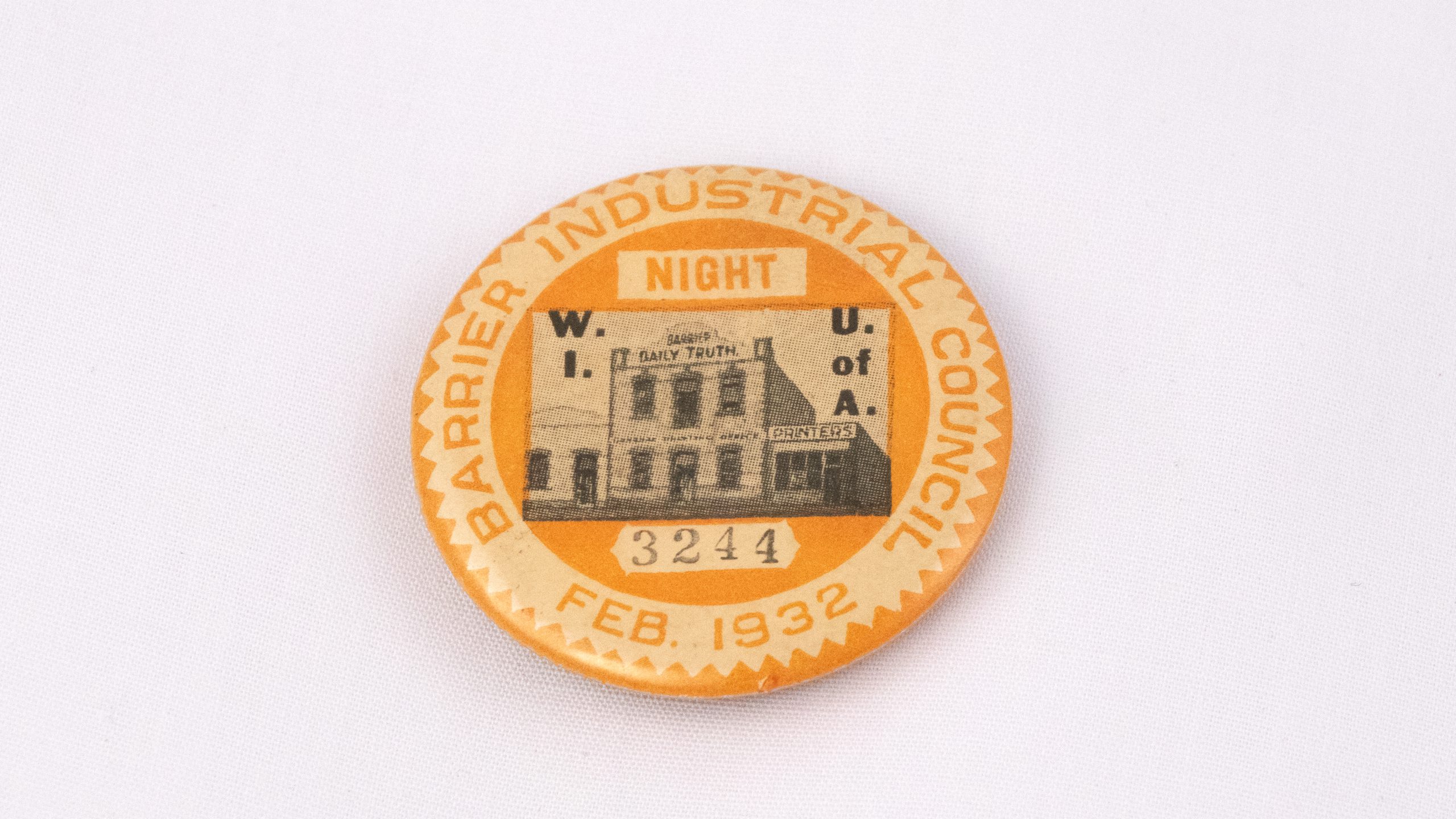Badges of Honour
Belonging to the Union
Broken Hill’s Amalgamated Miners Association (AMA) and the Barrier Labour Foundation (BLF) instigated badge show days in 1913. The wearing of badges was compulsory for all members and instigated to boost union membership and prevent ‘scabs’ (non-union labour) from entering or working on the mines.
Mining managers had hired scabs during the long 1909 strike, diminishing the unions’ strength. As a result, the AMA and BLF’s goal was to achieve 100 percent union membership (known as a ‘closed shop’) and increase their collective bargaining power. All union members were forbidden to work with those who did not have and display a current badge.
The badges were an instantly recognisable way of showing that workers were financially current. Each badge was colour-coded to show which of the three day shifts a miner worked, and non-mining union members who worked in town wore smaller, plainer badges. The badge ploy worked, leading to ninety-five per cent union membership on the mines by August 1914.
Badge designs were simple, printed in one or two colours, and often featured the face of a prominent union figure or imagery that symbolised the collective solidarity felt with union workers elsewhere. Some badges were designed to highlight the broader social issues that mattered to the movement such as the impacts of war.
The February 1937 night badge featured depicts British union organiser Tom Mann who was a pivotal figure in the 1909 strike; the May 1932 badge marks the completion of the Sydney Harbour Bridge; and the August 1937 Unity Against War day badge features Sydney’s Hyde Park ANZAC Memorial sculpture Sacrifice by Rayner Hoff; there are many more in the Trades Hall’s extensive badge collection.
Broken Hill’s badge show days have endured for more than a century and are now a quarterly ritual. Every three months, workers who are members of unions aligned with the Barrier Industrial Council (BIC) are required to show their badges. Much like the BLF in its day, the BIC is the body collectively representing the majority of Broken Hill’s unions. Contemporary badge shows are a mark of respect for historic industrial struggles and gains, and a visible show of solidarity with the BIC.











